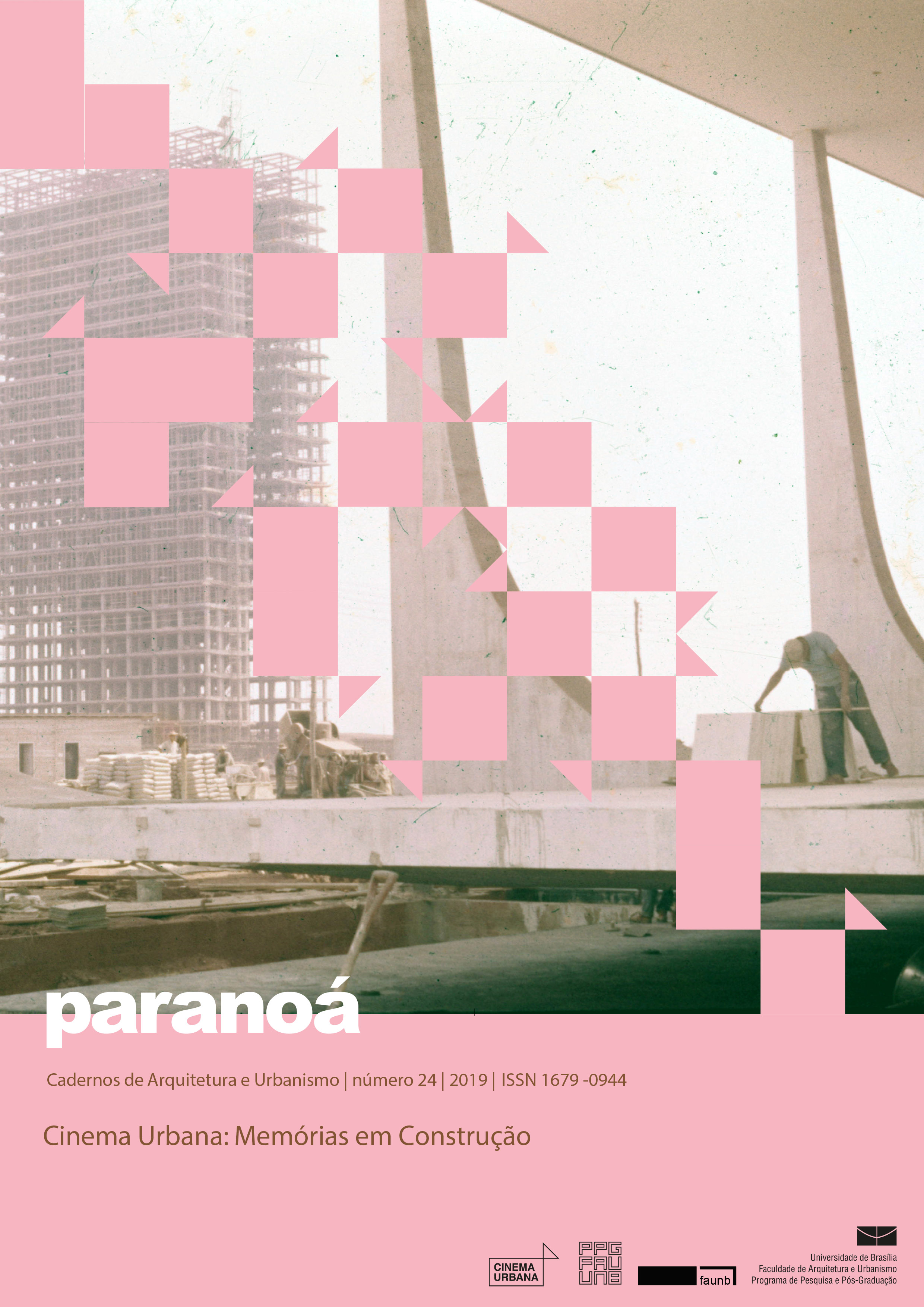"Hello! Is anybody there?"
Scenographic architecture
DOI:
https://doi.org/10.18830/issn.1679-0944.n24.2019.10Keywords:
architecture, cinema, house, child, language, routeAbstract
Joaquim is an eight-year-old boy who is about to win a little brother. On the night of the baby's arrival, he stays home alone and receives an unexpected visit from the little alien Mika, who falls from the skies right into his garden. "Hello! Is anybody there? ”, By Norwegian author Jostein Gaarder, gives rise to the adaptation for a short film of the same name. Here, the house represents in its formal composition an expression of that look, and developing it is the key point of this project. To create Joaquim's house, some study steps were necessary. Firstly, an investigation of the architecture / cinema relationship, focusing on the route and the relationship between these two artistic languages, studying the montage by Sergei Eisenstein and the architectural promenade by Le Corbusier. Houses on and off the screens also served as inspiration. And, finally, everything was stitched together from the child's perspective and the relationship of two-dimensional drawing as a form of expression that is closely related to that of cinema and its concept of montage. The scenario is the final result of the work, and arises from the script as a program of needs for the ambience of the house, and from Joaquim's relationship with the world.
Downloads
References
ARNHEIM, Rudolph. Arte & Percepção Visual. Uma psicologia da visão criadora, 1980
BRUNO, Giuliana. Atlas of Emotion. Journeys in Art, Architecture and Film.2002
EISENSTEIN, Sergei M. BOIS, Yve-Alain. GLENNY, Michael. Montage and Architecture, 1989.
FONTENELLE, Romulo. O indizível no cinema de Heinz Emigholz, 2017
GAARDER, Jostein. Ei! Tem alguém aí?, 2000.
HAMBURGUER, Vera. Arte em cena. A direção de arte no cinema brasileiro, 2014.
JACOBS, Steven. The wrong house: The architecture of Alfred Hitchcock, 2013.
WITZIG, Hans. Ponto, Pontinho, Vírgula e Tracinho. Uma aula de desenho para crianças, 1997
ENTREVISTAS / SITES
GEHRY RESIDENCE/ GEHRY PARTNERS. Disponível em <https://www.archdaily.com/67321/gehry-residence-
frank-gehry>
SENS, Caio. A testemunha especular. Uma leitura fotográfica acerca de Blow Up, de Michelangelo Antonioni.
Resenhas Online, São Paulo, ano 15, n. 173.02, Vitruvius, maio 2016 <http://www.vitruvius.com.br/revistas/
read/resenhasonline/15.173/6010>.
FILMES
Blow up (1966), Michelangelo Antonioni
Meu tio (1958), Jacques Tati
Psicose (1960), Alfred Hitchcock
Onde vivem os monstros (2010), Spike Jonze
A Fantástica Fábrica de Chocolate (2005), Tim Burton
O encouraçado Potenkim (1925), Sergei Eisenstein
O gabinete do Dr caligari (1920), Robert Wiene
VÍDEOS
1925: How Sergei Eisenstein Used Montage To Film The Unfilmable. One Hundred Years of Cinema. Disponível em: <https://youtu.be/g5WbeoP_B8E?list=PLR8yfTmrW2C03iLS4V81R0HKlB4zqHskI>
Downloads
Published
How to Cite
Issue
Section
License
Copyright (c) 2019 Paranoá: journal of Architecture and Urbanism

This work is licensed under a Creative Commons Attribution 4.0 International License.
Autores que publicam nesta revista concordam com os seguintes termos:
- Autores mantém os direitos autorais e concedem à revista o direito de primeira publicação, com o trabalho simultaneamente licenciado sob a Licença Creative Commons Attribution que permite o compartilhamento do trabalho com reconhecimento da autoria e publicação inicial nesta revista. http://creativecommons.org/licenses/by/4.0
- Autores têm autorização para assumir contratos adicionais separadamente, para distribuição não-exclusiva da versão do trabalho publicada nesta revista (ex.: publicar em repositório institucional ou como capítulo de livro), com reconhecimento de autoria e publicação inicial nesta revista.
- Autores têm permissão e são estimulados a publicar e distribuir seu trabalho online (ex.: em repositórios institucionais ou na sua página pessoal) a qualquer ponto antes ou durante o processo editorial, já que isso pode gerar alterações produtivas, bem como aumentar o impacto e a citação do trabalho publicado (Veja O Efeito do Acesso Livre).















